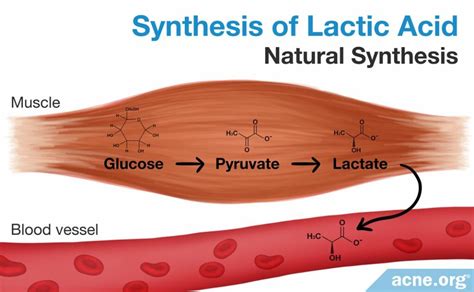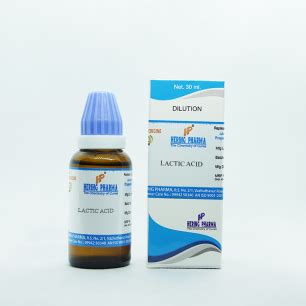Intro
Discover what lactic acid is, its benefits, and uses in skincare, athletic performance, and food production, exploring its role in anaerobic respiration, muscle fatigue, and fermentation processes.
Lactic acid is a naturally occurring compound that plays a crucial role in various biological processes, including metabolism, muscle function, and skin health. It is an alpha-hydroxy acid (AHA) that is produced in the body as a byproduct of anaerobic respiration, where glucose is broken down to produce energy without the presence of oxygen. Lactic acid is also found in various food products, such as yogurt, kefir, and sauerkraut, and is used as a food preservative and flavoring agent.
The importance of lactic acid cannot be overstated, as it has numerous benefits for human health and wellbeing. In the context of exercise and physical activity, lactic acid is often associated with muscle fatigue and soreness. However, it also plays a critical role in the production of energy and the removal of waste products from the muscles. Additionally, lactic acid has been shown to have antibacterial and antifungal properties, making it a popular ingredient in skincare products and wound care treatments.
As we delve deeper into the world of lactic acid, it becomes clear that its applications and benefits extend far beyond the realm of sports and exercise. From its use as a natural preservative in food products to its potential therapeutic applications in the treatment of various diseases, lactic acid is a versatile and fascinating compound that deserves further exploration. In this article, we will examine the benefits, working mechanisms, and applications of lactic acid in various fields, including sports, skincare, and medicine.
What is Lactic Acid?

Benefits of Lactic Acid
The benefits of lactic acid are numerous and varied, ranging from its role in energy production and muscle function to its potential therapeutic applications in the treatment of various diseases. Some of the key benefits of lactic acid include: * Energy production: Lactic acid is produced in the body as a byproduct of anaerobic respiration, where glucose is broken down to produce energy without the presence of oxygen. * Muscle function: Lactic acid plays a critical role in muscle function and contraction, particularly during high-intensity exercise. * Skin health: Lactic acid has been shown to have antibacterial and antifungal properties, making it a popular ingredient in skincare products and wound care treatments. * Food preservation: Lactic acid is used as a natural preservative in food products, such as yogurt and sauerkraut, to extend shelf life and prevent spoilage.Working Mechanisms of Lactic Acid

Applications of Lactic Acid
The applications of lactic acid are numerous and varied, ranging from its use as a natural preservative in food products to its potential therapeutic applications in the treatment of various diseases. Some of the key applications of lactic acid include: * Food preservation: Lactic acid is used as a natural preservative in food products, such as yogurt and sauerkraut, to extend shelf life and prevent spoilage. * Skincare: Lactic acid is used in skincare products and wound care treatments due to its antibacterial and antifungal properties. * Sports and exercise: Lactic acid is often associated with muscle fatigue and soreness, but it also plays a critical role in energy production and muscle function. * Medicine: Lactic acid has potential therapeutic applications in the treatment of various diseases, including diabetes, cancer, and inflammatory disorders.Lactic Acid in Sports and Exercise

Lactic Acid in Skincare
Lactic acid has been shown to have antibacterial and antifungal properties, making it a popular ingredient in skincare products and wound care treatments. Some of the key benefits of lactic acid in skincare include: * Hydration: Lactic acid helps to hydrate the skin and improve skin elasticity. * Exfoliation: Lactic acid helps to exfoliate the skin and remove dead skin cells. * pH regulation: Lactic acid helps to regulate pH levels in the skin, particularly in individuals with sensitive skin.Lactic Acid in Medicine

Conclusion and Future Directions
In conclusion, lactic acid is a naturally occurring compound that plays a crucial role in various biological processes, including metabolism, muscle function, and skin health. Its applications and benefits extend far beyond the realm of sports and exercise, with potential therapeutic applications in the treatment of various diseases. As research continues to uncover the mechanisms and benefits of lactic acid, it is likely that its use will become more widespread and its potential will be fully realized.What is lactic acid?
+Lactic acid is a naturally occurring compound that is produced in the body as a byproduct of anaerobic respiration.
What are the benefits of lactic acid?
+The benefits of lactic acid include its role in energy production, muscle function, and skin health, as well as its potential therapeutic applications in the treatment of various diseases.
How is lactic acid used in skincare?
+Lactic acid is used in skincare products and wound care treatments due to its antibacterial and antifungal properties, as well as its ability to hydrate and exfoliate the skin.
We hope this article has provided a comprehensive overview of lactic acid and its benefits, working mechanisms, and applications. Whether you are an athlete looking to improve your performance, a skincare enthusiast seeking to improve the health and appearance of your skin, or a medical professional interested in the potential therapeutic applications of lactic acid, we invite you to share your thoughts and experiences with us. Please comment below or share this article with others who may be interested in learning more about the fascinating world of lactic acid.
